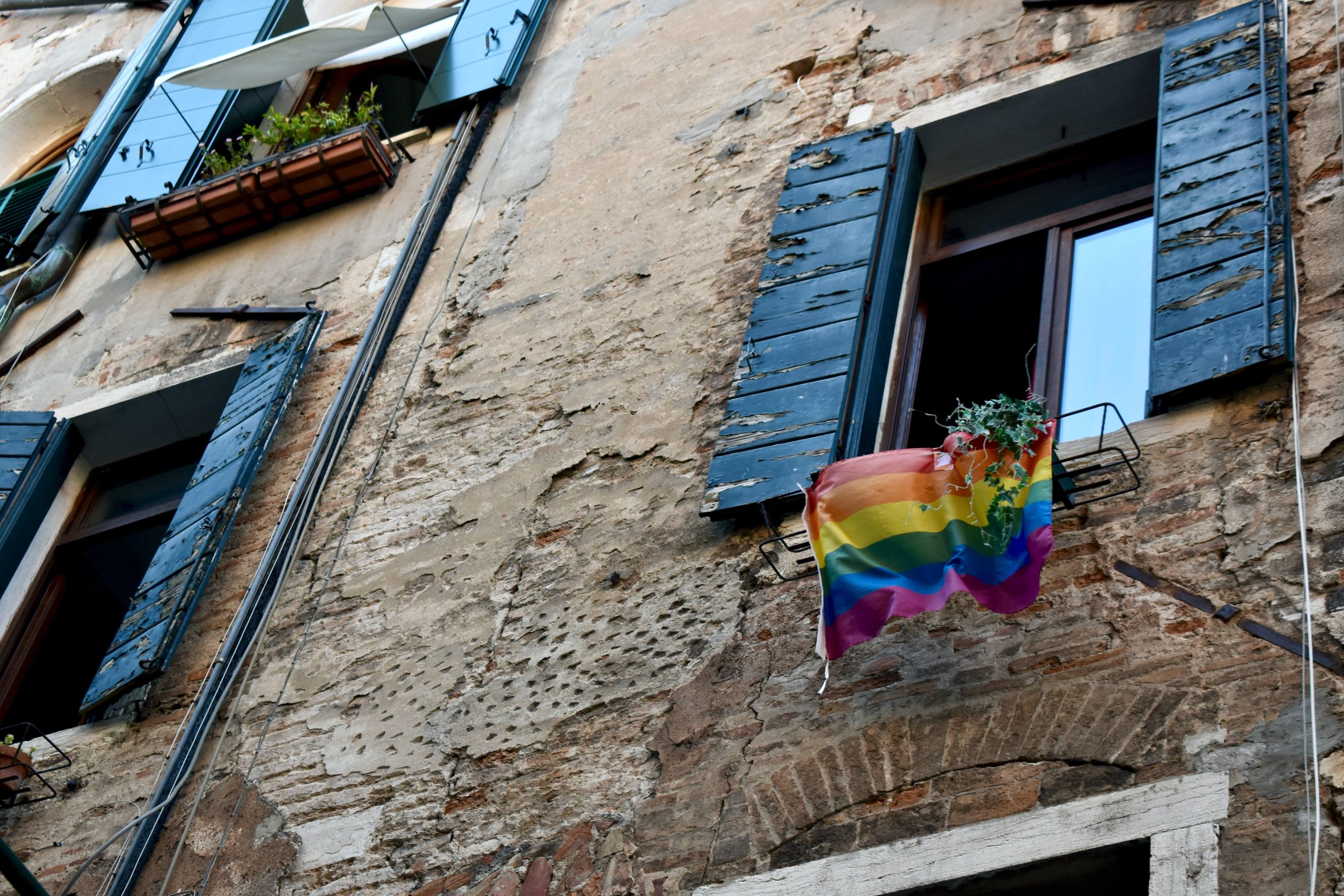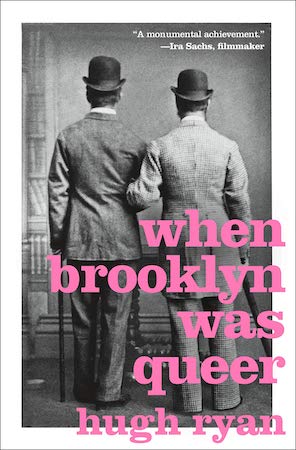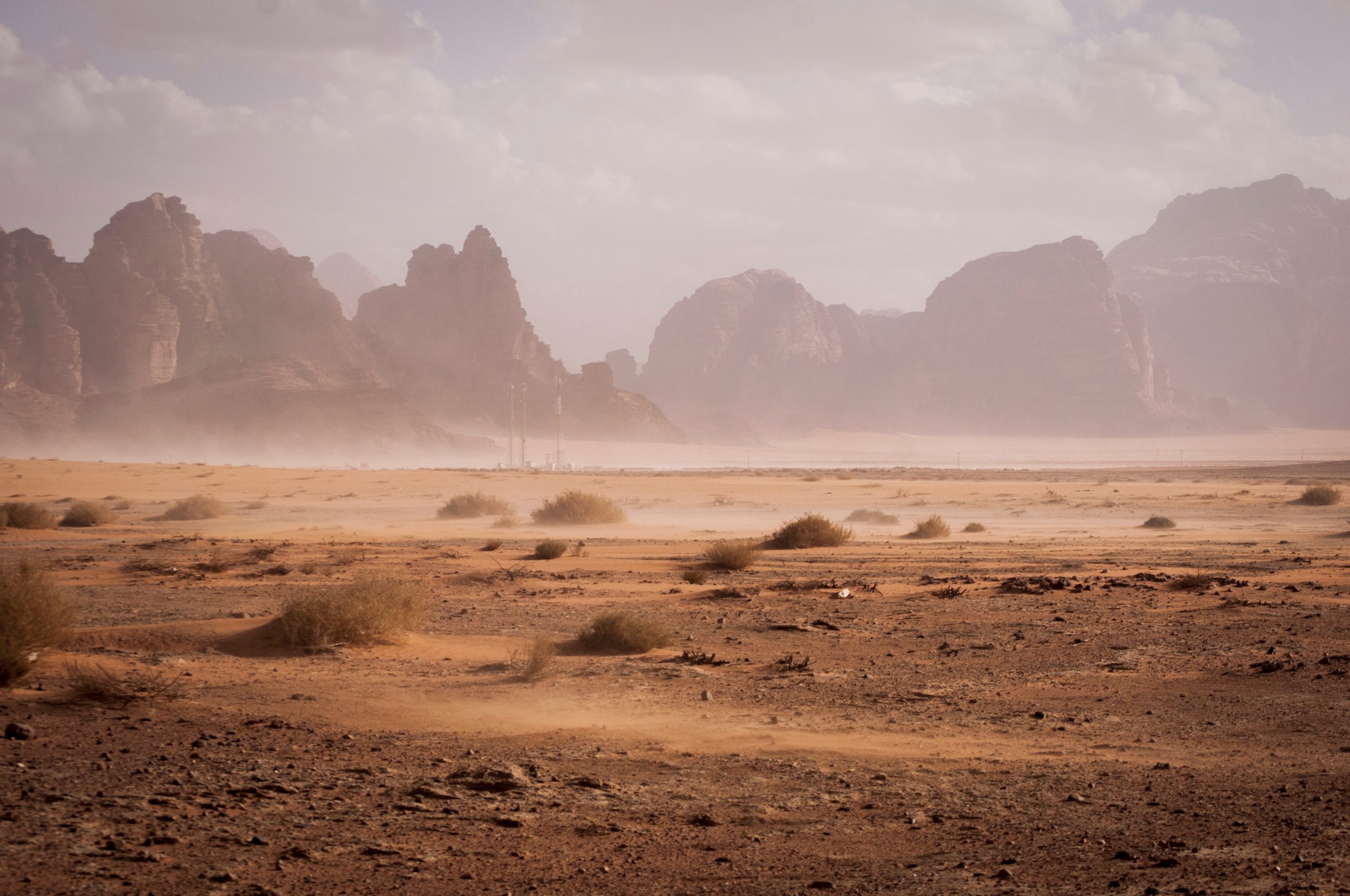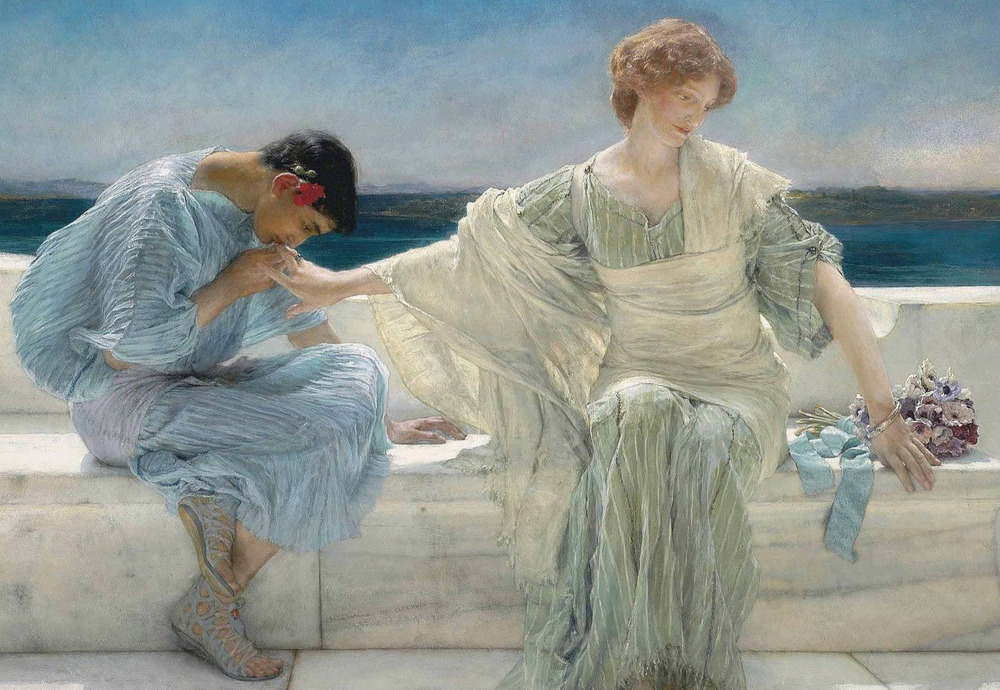Books & Culture
Writing My Community’s History Helps Me Chart Our Better, Brighter Future
I was told we were nowhere in the past; now queer people are everywhere in the present

The old reading room in Irvington, New York was a glorious Gilded Age folly, filled with heavy wooden furniture cracked by decades of use, opalescent turtleback Tiffany lamps, a card catalog the size of a small car, and piles upon piles of dust. History, constrained safely in the pages of old and untouched books, went there to be forgotten—as did I, hiding there during my shifts as a library page, trying to eke out a vague eroticism from primers on Greco-Roman art, the only books I could find that listed “homosexuality” in the index.
It was nineteen-ninety-one or two or three, and I was trying to prove I existed. In the shadowy library stacks, I searched for myself, and those books were transmuted into mirrors by the dim slanting light of the early evening sun. I was Zeus, Elagabalus, Kalamos, and Karpos. I lived a hundred lives, one minute transforming into a bull, the next kissing a boy – equidistant fantasies, equally unreachable from where I stood. In those classical myths I saw myself, a modern homosexual, rendered fetchingly in period drag.
I can’t help but feel a rush of love for that fey child, groping towards something he’d only glimpsed in dreams.
I was wrong, of course. Those pages? They were no more mirrors than I was a god. They were windows, but I had not yet learned to see beyond the seductive ghost-self the glass offered me. In other words: I let what I was looking for obscure what I was seeing. And yet, in that moment, that mirage was my salvation.
In reality, I was at best a tenderqueer Narcissus, as of yet deaf to the polyphonic echoes of history. That I didn’t end up with a fetish for gleaming white marble or bone-dry paper is a small miracle. Instead, in a sort of limited way, I began to love history, or at least to see its potential to be something other than the rote memorization of names and dates and kings and wars. Every journey starts somewhere, and I can’t help but feel a rush of love for that fey child, groping towards something he’d only glimpsed in dreams.
I’d never met an out gay person; would not, in fact, meet any until college. Of course I knew queer people – cousins who lived with their “good friends” for years; my butch, unmarried Aunt Alice; and one (1!) closeted teacher in each K-12 school I attended: sporty Ms. G, the elementary school gym teacher; androgynous Ms. T, the middle-school science nerd; and buttoned-up Mr. D, the sweater vest wearing English teacher, whose commitment to a kind of Mr. Rogers-esque asexuality did nothing to end the rumors that dogged him in our high school.
In the world of flesh, gay people were few, sad, and hidden. In the world of paper, we were everywhere, and sometimes gods. Occasionally those two thoughts brushed against each other, and I’d feel a burst of static. It was the same feeling I had when the priest at CCD explained that homosexuals were intrinsically disordered; spiritually bent towards evil. I was lazy, I talked a lot, and I hated it when my peas touched my potatoes on the dinner plate – but evil? That seemed far-fetched.
I was told we were nowhere in the past; now, queer people were everywhere in the present.
I learned, over time, to listen for that static, to search for the places where what I’d been told and what I knew rubbed incompatibly against each other. Haltingly, with little understanding of what I was doing, I began to excavate those secret spots – poorly, like a crackpot archeologist, who finds the bones of a dinosaur and declares it a dragon.
Those white marble statues I lusted over? They never really existed, at least not the way I knew them. The Romans painted them garish colors in hideous combinations eroded by time. What was beautiful to them made no sense to me.
(There was a lesson there, but I wasn’t yet ready to learn it.)
Down the decades, that static between the world and me dissipated. My body followed my soul out the door of the church; Ellen and Laura Dern made out on primetime; and everyone (and my cousins) came out. Homo- and transphobia still existed, of course, but that sense of absolute dislocation from reality ebbed with every year.
But around the time I started research for my first book, a queer history of Brooklyn, the static – or something like it – quietly returned. It was different now; muted, defuse, multidirectional. Before, queer people were nowhere in the present, and so I was told we were nowhere in the past; now, queer people were everywhere in the present, and it seemed we had been everywhere as well – passively waiting to be discovered, exactly the same as we are today, with the same thoughts, desires, cares, identities, and worries, just dressed in petticoats and togas and shendyts.
I’d have believed that when I was 15; I’d also have told you that Rusted Root was the best band in America.
The harder I looked for those historical homos, however, the more I had to squint to see them. There was always some detail in the way, some aspect of their life that I had to ignore, or downplay, or “interpret” to make it align with our modern ideas of being gay or trans.
There were of course queer people in the past, filled with same-sex desire and cross-gender identification. But the further my research took me, the less those desires and identities added up to an overall picture I understood. The building blocks were the same, but the final construction was very different.
In particular, as my research crossed the divide from the 1900s to the 1800s, I began to see a different way to assemble all the pieces of queerness; what late Victorians called “The Invert.” In so doing, I began for the first time to truly understand history.
Allow me to digress here for a moment.
Victorians believed in – and built – a world sharply divided cleaved in twain by sex, both physically and metaphorically. Victorian lives were highly homosocial: aside from the immediate family, men were expected to spend all their time with other men, and women with other women. This physical separation was necessitated by, and paralleled, the inherent metaphysical differences between the sexes: Men were strong, rational, and sexual; women were weak, emotional, and chaste.
In this world, a man could publicly profess his love for another man, sleep in the same bed with a man for years, and have a man describe his thighs as being “as perfect as a human being could be,” and still get married and become the 16th President of the United States (Here’s looking at you Abe). Far from being condemned, love between men was celebrated. It was the Platonic ideal of Platonic ideals.
[NB: Plato fucked men.]
In this world, most people that we today consider gender normative homosexuals (or bisexuals) probably didn’t understand themselves as particularly different from people we consider gender normative heterosexuals. The bright dividing line of sexual orientation, which we today see as the first order question in all issues of desire or sex, did not yet exist. Heterosexuality did not yet exist – could not yet exist. There was no normative sexual identity that men and women could share, because they were so inherently different. Sexual orientation had not yet been gerrymandered out of gender; what a man did with another man was one piece in his larger ability to conform to Victorian gender expectations.
There was no normative sexual identity that men and women could share, because they were so inherently different.
Thus, all queer identity was understood as a disorder of gender – and of sex. Much as sexuality had not yet been cleaved from gender, gender had not yet been cleaved from the physical body. In fact, Victorians thought that all aspects of what we call personality directly correlated to your body, and vice versa. If your lips were thin, you were probably a liar. And if you violated gender norms, your body was surely improperly sexed as well.
Thus the Invert: improperly gendered and improperly bodied. A third sex.
This might sound ridiculous to modern ears. But think of all the aspects of your body that could be judged outside the norm for your sex, if that mattered: your weight, your height, your hairiness, the pitch of your voice, the shape of your jaw, the swing of your legs as you walked. Look hard enough, you’ll find what you’re told to see.
Certainly, my middle school peers were capable of diagnosing everything from my skinny fingers to my wrong-blue shoes as “girly,” and they didn’t have an entire field of pseudoscience backing them up. I used to think those kids were stupid, unable to understand the differences between sex, gender, and sexuality. Now, I see them carrying the heavy water of inherited legacy ideas, the stubborn conceptual entanglement passed down from our Victorian forebears.
Knowledge never dies, it simply evolves, internalizing vestigial structures like a human fetus absorbing its embryonic tail. Thus, to know why we are who we are today, we have to better understand who we were yesterday. The more I understood the invert, the better I could understand the homosexual; the more I understood 1898, the better I could understand 1998; the more I understood them, the better I could understand me.
I was living in a world where even a whiff of sexual desire between men would see you branded as a faggot for life.
Who would I have been a hundred years ago? It’s impossible to say for certain, but in the Victorian world, a feminine gay man, a butch lesbian, a trans man, and a trans woman – opposite corners of our modern identities – could all have been considered (and considered themselves as) inverts. Their desires for certain kinds of sex with certain kinds of people would have been noted, but they wouldn’t have added up to different identities.
On the other hand, a man who had sex with men, but was otherwise properly gendered, wouldn’t necessarily have been removed from the realm of normal manhood. For instance, in 1896, when a famous boxer named Young Griffo was arrested for raping a 12-year-old boy in his training gym on Coney Island, the judge in his case pronounced upon sentencing that Griffo was simply “careless and full of animal life…without sufficient self-control to restrain [himself].” Griffo wasn’t aberrant – he was exuberant. Men were expected to be hypersexual, and if a properly gendered man, away from the cooling touch of asexual womanhood, went overboard, committed rape or homosexuality or almost anything else, that was an unfortunate side effect of their peak manhood. As is largely still true today, rich cis white guys could do whatever they wanted.
Reading about Griffo smashed the mirror I thought I had found in the past. One hundred years after his arrest, I was living in a world where even a whiff of sexual desire between men would see you branded as a faggot for life. There was something that united us, a commonality that sutured through time to bind Griffo and I together – that was undeniable. But it didn’t make us the same, and it suggested that our worlds were more different than I had ever understood. What changed in the years that separated us?
Well, everything. But the prime mover was urbanization. In 1800, only 6% of Americans lived in urban places, by 1900 it was 40%, and today it’s over 80%. Urbanity took a wrecking ball to the American way of life, then reassembled the pieces into something entirely new.
By the late 1800s, and increasingly in the early 1900s, sexual scientists were aware of these divisions among deviants.
In these new American cities, the separations between men and women broke down, from casual contact on ferries and trolleys, to the exciting new world of “dating” for teenagers and young adults. In cities, marriage became less important to economic and social survival. In cities, you could leave your family or religion or name or gender behind. In cities, you could encounter new ways of being and moral codes, and even if they didn’t change your own, they suddenly put it in a new light – as one possibility among many. In cities, the people we call “gay” began to see each other, and in seeing each other, recognized themselves as a people for the first time in American history.
This surely happened many times in many places before it was codified into words like “homosexual.” In the 1850s in Brooklyn, for instance, Walt Whitman chronicled a world of working-class, mostly white men who had sex with men, and in his poetry, he defined their existence – naming them “comrades” or “comerados,” calling their love “adhesiveness,” and urging them to exchange as their singular token of affection the calamus flower, a common river reed shaped like a big dick (and named after Kalamos, the tragic queer Greek youth with whom I too had identified).
By the late 1800s, and increasingly in the early 1900s, sexual scientists were aware of these divisions among deviants, and tried their own hands at defining what a queer person was or could be. They were keen to winkle out “where” queerness was located – in the body or the mind. Thanks to Freud’s psychoanalytic theory of personality development (that our experiences make us who we are, not the shape of our lips) the belief that our identities map perfectly onto our bodies was rapidly falling out of favor.
When Freud moved sexuality into the mind, and separated it from both sex and gender, there were two critical implications for our developing new ideas about queerness:
- If queerness was in the mind, not the body, then improperly sexed bodies had to be classified as a unique phenomenon; as did people whose bodies were not “improper,” but who wished they were; and people whose queerness had nothing to do with the shape of their body – our modern queer trifecta of intersex, transgender, and homo/bisexual identities. As well,
- if queerness was in the mind, not the body, then normality was rendered invisible. Everyone could see who an invert was, but a homosexual? They could be anyone. Thus it became incumbent upon heterosexuals to constantly prove their heterosexuality, further driving a wedge between queer and straight culture – and pathologizing all homosocial love as an indicator of, or a step towards, homosexual love.
Decade by decade, I watched America build the conceptual cage I had grown up in. They banned gays in the military (when “consensual sodomy” was added as a punishable offense to the Articles of War in 1920), in movies (with the Hays Code in 1930), and in New York bars (with the creation of the New York State Liquor Authority in 1934). Once homosexuality had been driven completely out of the public sphere, it was easy to declare it a “sociopathic personality disturbance” (the American Psychiatric Association’s first Diagnostic and Statistical Manual of Mental Disorders, 1952) and “criminal, infamous, dishonest, immoral, or notoriously disgraceful conduct” (President Eisenhower’s Executive Order 10450, 1953).
I cannot see the future, but by clearly seeing the past, I know in my soul that the future can be different.
By the time I was born, we’d so effectively defined and demonized homosexuality, we’d forgotten the world had ever been different, or that it could ever be different. That forgetting was a necessary part of the new regime, because ideas of normality always rest on ideas of naturality, and if we can see the human hands constructing an idea, how natural can it be?
This is why I write queer history: Because I cannot see the future, but by clearly seeing the past, I know in my soul that the future can be different – will be different, cannot help but be different. There is no historical constant except change. I study history to glean our rate of acceleration and angle of impact, to see what where-we-have-been implies about where-we-are-going.
And we need that knowledge today. Something is breaking apart; perhaps America, but certainly something more fundamental than our enfant terrible empire: what it means to be queer. The mutants are mutating again.
You’ve noticed it, I’m sure: new labels you don’t understand – or understand so instinctively it takes your breath away. Unexpected enemies and strange allies; new, almost unimaginable allegiances (ex. Harry Potter & the Death Eaters). The perpetual questioning of the self suddenly yielding new answers. A vibe shift, as they say, as totalizing as it is inexplicable.
But not unprecedented.
What cities did at the end of the 19th century, the internet is doing now: allowing commonalities to develop into identities. In particular, it’s connecting those left out of our 20th century sexual schema – those whose desires aren’t coterminous with their sexual orientations, or whose genders aren’t binary, or who aren’t stable sexual subjects, happily spending their entire lives in one category at all. Not surprisingly, it is the least understood and accepted letters in the LGBT spectrum – B and T – where we’re seeing the most growth and exploration.
Much as “homosexuality” and “being trans” came from, and partially overlapped with, the concept of “being an invert,” these new categories rest uneasily inside and next to our current ideas. For instance, in our 20th century schema, bisexuality is often imagined as a sexual orientation that is attracted to “both” sexes. The 21st century idea of the “sapiosexual,” however, moves desire away from the physical body, to assert an identity based around attraction to the mind. This could function like classic 20th century bisexuality, but it doesn’t have to. “Sapiosexual” allows us to imagine a person whose sexual orientation is homosexual – they are attracted to physical bodies like their own – and also attracted to people of any sex/gender based on a different set of criteria.
And what we can imagine, we can be.
If I had to hazard a guess about where “queer” is going, it would be this: a movement away from “identity” understood as a stable, life-long category, which is the same (or largely similar) experience for everyone inside it; and toward an understanding of “L,” “G,” “B,” and “T” as clusters of common pathways, which may express sexuality or gender in ways that appear similar from the outside, but are functionally different experiences from the inside. Imagine a group of roads paralleling through the same landscape for a while, but coming from different starting points or headed toward different ends – a superhighway of sexual beings, some shifting lanes throughout their lives, others traveling one path forever.
We’ll find that the barrier between ‘homosocial’ and ‘homosexual’ is thinner than we’ve imagined.
Sexual orientation won’t disappear as a concept, but it will have to share the market – it’ll be a piece, rather than the piece, that determines the desires we feel and the sex we have. We’ll find that the barrier between “homosocial” and “homosexual” is thinner than we’ve imagined, for some of us at least.
More defined existence will be carved on the current borders between “feminine gay man” and “trans woman,” and “masculine lesbian” and “trans man” (perhaps in the way that ballroom culture already emphasizes the unity of these identities, rather than their disparities; perhaps through a delineation of non-binary identities; perhaps in some other way entirely). Physical sex will become more a la carte (“will you be having a penis with those breasts, ma’am?”) and more genders will be named based off these physical arrangements – producing, of course, more sexual orientations.
What do I predict? We’ll fractal ever forward, and hardly ever notice the change. Fifty years from now we’ll be something new, and the children will look back on the early 21st century and reduce our lives down to echoes – seductive, partial, inaccurate, nourishing, and perhaps prophetic reflections of who they have become.
I hope to be there for it: a dinosaur; a living-fucking-fossil; proof of what was and what isn’t anymore. I hope to be incomprehensible to Gen H, or whatever we’re up to by that point. I hope our world is so far in their rearview mirror that I have to explain our basic concepts to them, like homophobia and rearview mirrors.
But even if I’m not, by writing our history down, I hope to be their window into a past that lets them see their present more clearly.









